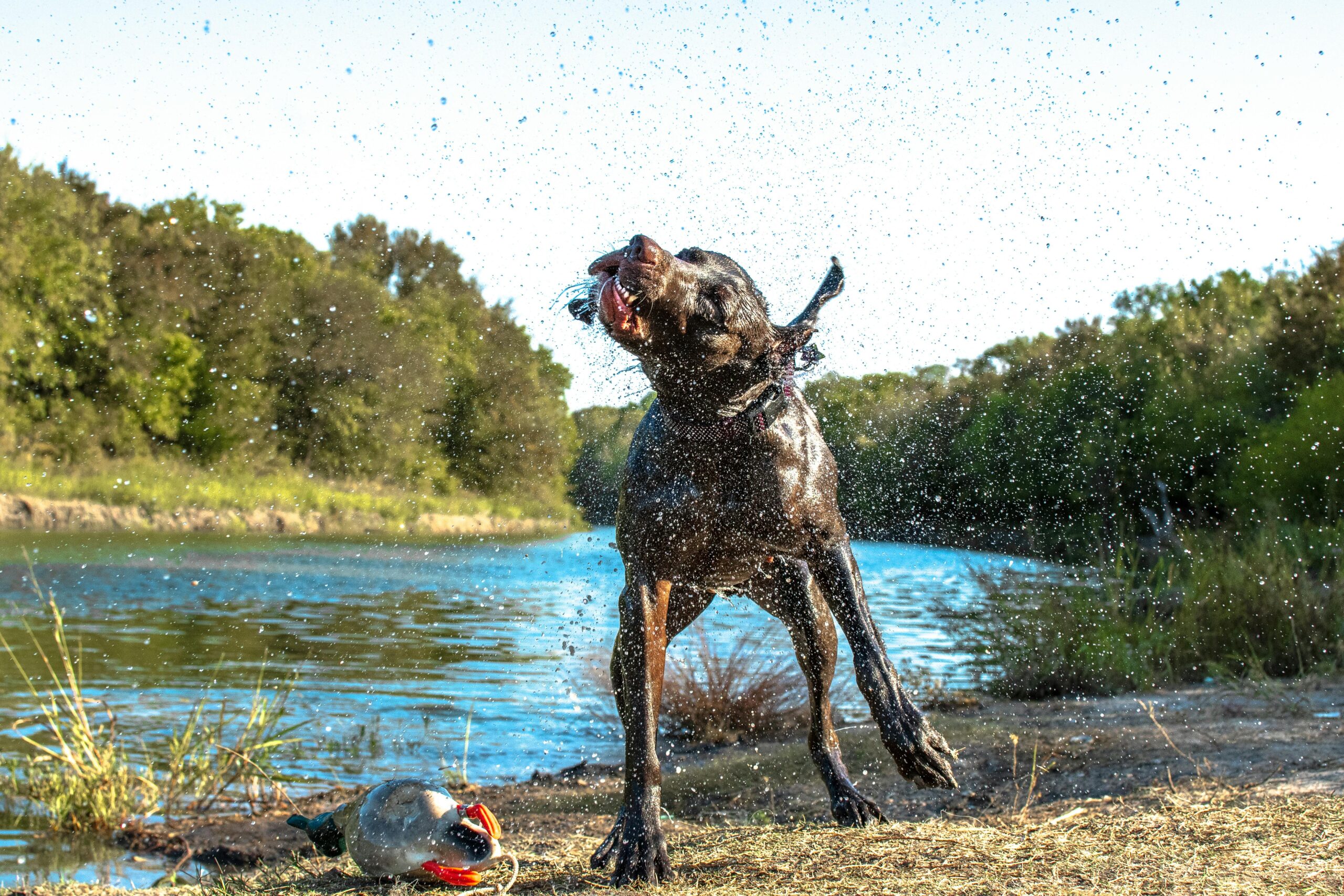Regular exercise is essential for your dog’s health, behavior, and overall well-being. But when the temperatures rise, the daily walk or play session can quickly turn from healthy to hazardous. Dogs are more sensitive to heat than humans, and exercising in hot weather without proper precautions can lead to dehydration, burned paw pads, or even life-threatening heatstroke.
In this article, you’ll learn how to safely exercise your dog in hot weather, how to recognize warning signs of overheating, and how to keep your pet active and comfortable all summer long.
Why hot weather is risky for dogs
Unlike humans, dogs don’t sweat through their skin. Instead, they cool down mainly through panting and a small amount of sweat from their paw pads. When it’s hot and humid, these mechanisms aren’t always enough to regulate body temperature effectively.
Heat-related dangers include:
- Heat exhaustion: early stage of overheating
- Heatstroke: a medical emergency that can cause organ failure
- Dehydration
- Burned paw pads from hot pavement
- Sunburn, especially in short-haired or light-colored breeds
Certain dogs are more at risk, including:
- Puppies and senior dogs
- Overweight dogs
- Brachycephalic breeds (like pugs, bulldogs, and boxers)
- Dogs with heart or respiratory issues
Time your walks wisely
The most important strategy for summer exercise is choosing the right time of day. Avoid walking your dog during the hottest part of the day, typically between 10 a.m. and 4 p.m..
Instead:
- Walk early in the morning, just after sunrise
- Take a second walk after sunset, when temperatures drop
- Stick to shaded routes or tree-lined paths
- Use apps or thermometers to check the “real feel” temperature and humidity before going out
Even if it feels manageable to you, the ground and the air close to your dog’s body can be much hotter.
Do the pavement test
Before stepping out, test the sidewalk or asphalt with the back of your hand. If you can’t hold it there for 7 seconds comfortably, it’s too hot for your dog’s paws.
Burned paw pads can result in:
- Limping
- Darkened or blistered pads
- Reluctance to walk
- Licking or chewing the feet
On hot days, opt for grass, dirt trails, or shaded parks instead of pavement.
Adjust the intensity and duration
In cooler months, you might go for long walks or play fetch for 30 minutes without issue. But in hot weather, less is more.
Tips to adjust:
- Keep walks short — start with 10–15 minutes
- Reduce running or intense playtime
- Use enrichment toys or training games indoors
- Let your dog set the pace — if they slow down, take a break
Always bring water and stop for rest in the shade. If your dog lies down or refuses to continue, they may be overheating.
Bring water and hydration tools
Hydration is critical in warm weather. Always bring:
- A collapsible water bowl or portable dog bottle
- Clean, cool water (not ice-cold)
- Offer water every 15–20 minutes during activity
- Encourage drinking even if your dog doesn’t seem thirsty
Avoid giving salty treats or foods before and during exercise in the heat, as they can increase dehydration risk.
Use cooling gear
Specialized dog products can help manage body temperature during exercise.
Consider:
- Cooling vests or bandanas soaked in cold water
- Cooling mats for post-walk recovery
- Booties to protect paws from hot surfaces
- Paw balm to reduce friction and prevent cracking
Make sure any gear is lightweight, breathable, and properly fitted to avoid restricting movement or airflow.
Exercise indoors when it’s too hot
If outdoor conditions are unsafe, shift activity indoors. Mental stimulation and gentle physical movement inside can still meet your dog’s exercise needs.
Indoor activity ideas:
- Hide-and-seek with treats or toys
- Tug-of-war with a safe rope toy
- Basic training sessions with positive reinforcement
- Scent games using household objects
- Puzzle feeders or frozen Kongs
Even 20–30 minutes of interactive indoor time can satisfy your dog’s energy without heat exposure.
Use water-based play
On especially hot days, adding water to play can help cool your dog down while keeping them active.
Safe water play options:
- Sprinklers or garden hoses
- Kiddie pools (shallow and supervised)
- Dog-friendly beaches or lakes
- Controlled swims in a pool (only for dogs who enjoy water)
Always supervise water play and make sure your dog can safely exit the water. Not all dogs are natural swimmers.
Recognize signs of overheating
Dogs won’t always stop themselves before they get into danger. Watch closely for signs of heat stress:
- Excessive panting or drooling
- Bright red or pale gums
- Lethargy or weakness
- Vomiting or diarrhea
- Glazed eyes or disorientation
- Collapse
If you see these signs:
- Move your dog to a shaded, cool area immediately
- Offer water in small amounts
- Wet their paws, belly, and ears with cool (not ice-cold) water
- Use a fan if available
- Call your vet right away — heatstroke is an emergency
Know your dog’s limits
Every dog is different. Some breeds love the heat, while others struggle in mild temperatures. Learn your dog’s heat tolerance and adjust accordingly.
For dogs that are especially heat-sensitive:
- Limit outdoor activity to potty breaks
- Create an indoor play schedule
- Use air conditioning or fans
- Avoid car trips where heat can build up quickly
Being attentive and responsive to your dog’s behavior keeps them safe and healthy year-round.
Summer fun, the safe way
Exercising your dog in hot weather requires more thought and care — but it doesn’t mean skipping activity altogether. With smart timing, hydration, and flexibility, your dog can stay active, engaged, and safe even on the hottest days.
Pay attention to their signals, make heat-aware adjustments, and keep things fun. Your dog doesn’t need a marathon — just a few minutes of meaningful movement and your presence to be happy.

